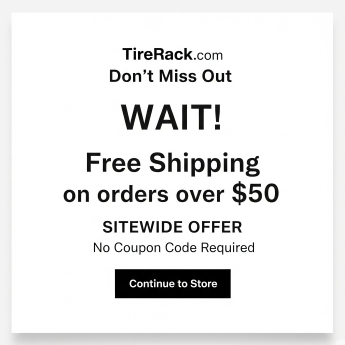If you’re into autos, you may have heard of a pre-purchase inspection (PPI). It’s basically a final mechanical checklist that works to ascertain mechanical soundness prior to the purchase of a used vehicle.
Well, this is our pre-purchase checklist for tires. Just some final questions to ask, and items to consider before you take the new tire plunge…
1. Does the tire actually suit your needs and purposes?
You don’t wear high heels to the gym, and you wouldn’t wear ‘ball sneakers to a wedding (unless you’ve really got it like that). Don’t buy a max performance summer tire with intended year-round use in North Dakota. And are you sure you want off-road tire audibility on your daily drive? Consider the pros and cons associated with every potential tire purchase.
Pay attention to, and heed the seasonal designation of tires. The expressed purposes and (if applicable) climatic limitations of a tire per the manufacturer are crucial, real, and not marketing speak… Be sure to select a tire that is suitable for your climate, your vehicle, and your standard, day to day purposes.
2. Tread life warranty?
If you want insight into what the tire manufacturer projects for mileage and durability, have a look at the treadlife warranty.
In some ways, the tire tread life warranty or lack thereof separates the tire pretenders from contenders. No manufacturer wants to handle thousands of tire tread life warranty claims. So if the manufacturer applies a 65,000 mile tread life warranty to a given tire, then that is at least an indication that they think they’re selling you a durable, quality set of rubber.
As an additional longevity check, have a look at the tread wear grade of the tire.
(Note that in some tire categories treadlife warranty is not standard. You’ll have to review various tires in your selected tire category to determine the warranty norm. You were going to do that comparison shopping anyways, right? See 6. below.)
3. What are users saying?
User feedback in any industry is always fraught with potential pitfalls, but on the whole, tire feedback from users is helpful and over time a relatively accurate consensus about a tire model emerges.
Online tire shops like Tire Buyer, Tire Rack, and Discount Tire are resources for substantial and good quality user opinion. Our tire reviews and summaries also cut to the chase on hundreds of tires.
For example, wondering if your potential new all season tire is actually reasonably capable when the snow flies? User reviews are a good resource. (See also: When the snow flies, not every all season tire is equal.)
4. Are there authoritative tests on the tire?
Have a look at authoritative tire tests on the tire. Testing often yields meaningful, objective (and subjective) results. If you can corroborate the information gleaned from user data (step 3.) with authoritative test results, then “that’s a bingo.”
(We’ve shared test results from around the world throughout our tire reviews.)
5. Verify tire pricing online, and, well, probably purchase the tires online too.
Think you’re getting a decent price from your local dealer? Based upon our research we’re not so sure… Buy Tires Online and Avoid Dealer Rip Off.
Never purchased tires online? If you’re capable of chewing gum while driving, and have made it this far in our checklist, then you’re more than capable of buying tires online with ease. See our Idiot’s Guide to Buying Tires Online.
At the very least, verify that the price you’re getting from your local dealer or tire shop is fair as compared to the online price. And be sure to take into consideration the discounts that are available buying tires online too (see 8.).
6. Take 5 minutes to explore alternative, competing tires.
Both from a value/price standpoint, and a quality standpoint. In so many cases, a superior tire can be had for nominally more. (And in far more cases than you might expect, the superior tire is actually less money.)
Once you’ve got a tire in your sights, take 5 minutes to compare that tire against its direct category competition. We typically mention competing, alternative tires in our tire reviews, so those are a good place to start.
7. Check for an EU Tire Identification Label
In Europe, tire manufacturers are required to publish objective fuel economy, wet traction, and noise emission ratings for their tires.
Not every model of tire is available in both the U.S. and Europe, but when that is the case the EU Tire Identification Label is a helpful performance reference point. Learn more, and how to easily look for a tire’s EU Identification Label in this blog post.
8. Is a tire coupon or rebate available? Never pay full retail price for tires.
Tire manufacturers are in a constant state of competition, and so tire coupons and rebates are the norm. We’ve made this step very easy for you.
We’ve also arranged for you to save on any tire purchase at any time.
And if you’re deciding between tires, an applicable tire coupon or rebate may help to sway you one way or another.
In summary…
Tires are a massively important purchase for your vehicle, and can be a positive or negative component of your automotive experience for years to come. Cheap or poor quality tires are a financial waste and safety liability. Working through this pre-purchase checklist for tires should help you avoid an unfavorable tire experience.
If all of the above checks out, then your selected new tires pass the sniff test. Move forward with confidence.


